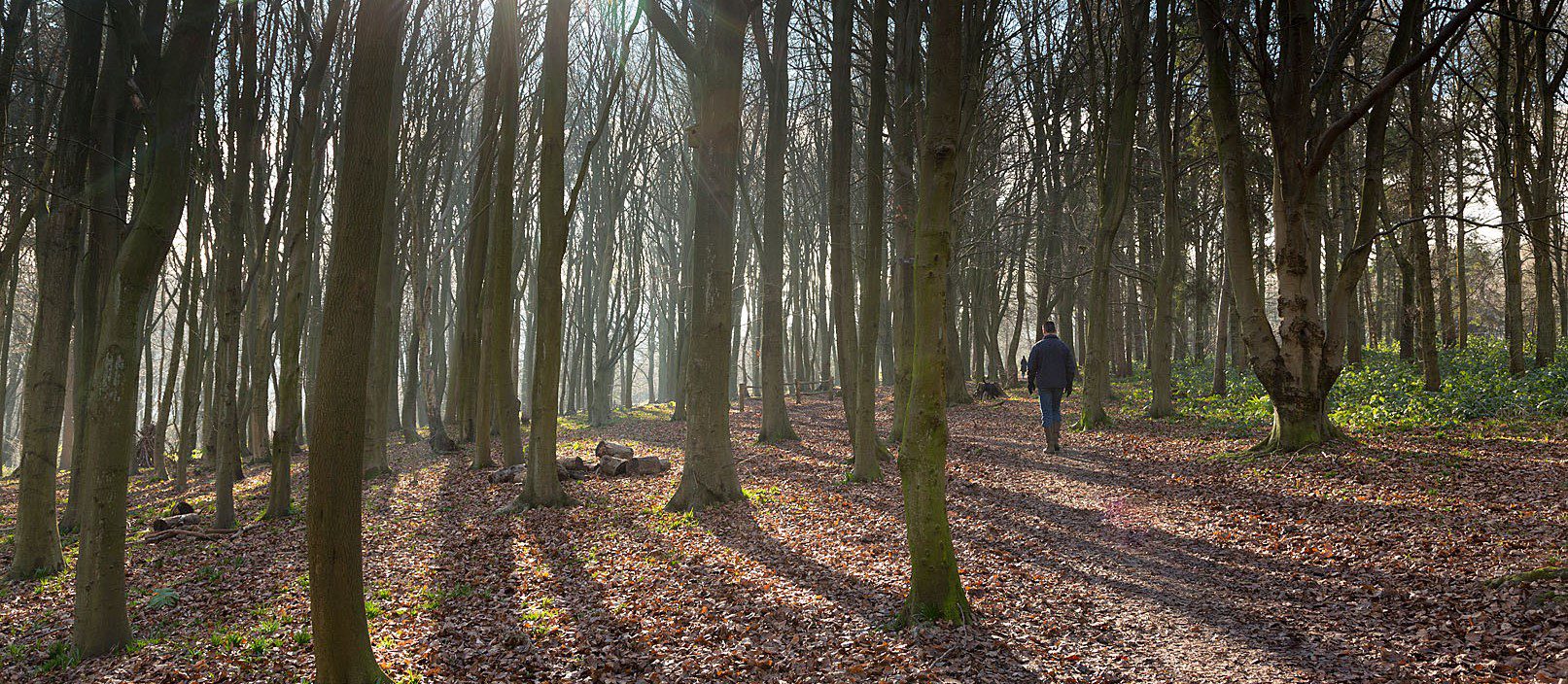Woodlands and trees
The Kent Downs National Landscape is one of Britain’s most wooded landscapes and it covers over 20% of the National Landscape (17,579ha). It is the second largest land-use after farming and is a vital component of the natural beauty of the Kent Downs. Woodlands support a variety of wildlife and plants and also offer areas for people to enjoy through walking, cycling, horse riding among other activities.
Ancient woodland
Almost 70% of the Kent Downs woodlands are ancient woodland meaning they have been continuously present since at least 1600 AD. The rich ground flora of ancient woodlands include bluebells, wood anemones, ramsons and yellow archangel and the bird song of warblers, nightingale and nightjar can be heard too. The ancient woodlands of the Kent Downs also preserve the evidence of thousands of years of human activity in earthworks, monuments and place names.
The highest woodland concentrations in the National Landscape are found on the Greensand Ridge between Sevenoaks and Tonbridge, along the chalk escarpment in West Kent, in the mid Kent Downs, above the Stour Valley and in areas of the East Kent Downs plateaux. The type of ancient woodland varies across areas and depends on the soil type. Lowland beech and yew woodland is particularly distinctive in the Kent Downs and is of European significance.
Sweet chestnut coppice
Coppiced sweet chestnut is a frequently seen across many woodlands in the National Landscape. You may have noticed a tree with many trunks sprouting out of one trunk at ground level – this is a coppcied stool. Coppicing is a woodland management technique that is still used today yet has declined over the years when demand for the wood to be used as hop poles among other industries declined. It involves a woodland being divided into sections and over a 10 – 15 year period cutting a section at a time, each tree in the section is cut down to ground level. Over time each tree will sprout multiple trunks.
Today sweet chestnut coppiced wood is mainly used to make post and rail fences and chestnut pailing. Yet coppicing has wider benefits for a woodland by increasing sunlight to the ground which allows a wider range of plants and animals to thrive. Other types of trees such as hazel can also be coppiced and it is an effective management technique used by many landowners to care for their woodlands and keep them healthy.

